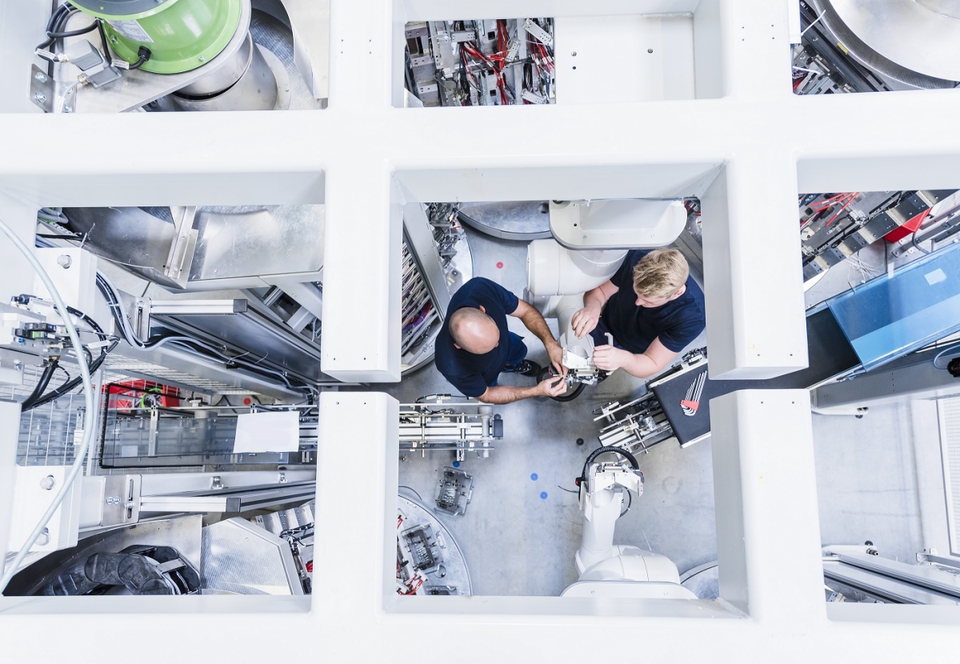Today's workforce is more complex and diverse than ever before. The concept of a career as a single linear path is long gone, as people from all walks of life forge new paths to economic and personal success.
For businesses, faster adaptation is the only way to keep pace as technology, education, and globalization are constantly changing the modern work culture. In particular, three trends - labor shortages, the gig economy, and automation - are redefining the way work gets done.
Labor Becomes Scarce Across The Globe
Much has been written about the labor shortages impacting almost every country and industry. In the United States alone, private payroll growth continues to miss expectations as companies struggle to attract top talent, while Japan reports the most extreme labor shortage in forty years.
In this environment, businesses must move quickly to find, attract, and keep the best employees. This means, as millennials become the largest generation, companies must understand to motivate this new generation.
To attract millennial talent, it takes more than flexibility, growth and autonomy; companies must also provide the opportunity to give back. 72% of the students entering the workforce say that “a job where I can make an impact” is important to their happiness, and many say they would prioritize working for companies with strong corporate social responsibility (CSR) policies - even if it meant taking a pay cut.
Another way to attract talent is to attract and embrace diversity in the workforce. For example, building day care facilities near job sites, or offering more flexible parental leave can attract more women - particularly in sectors like health care and manufacturing, where women are currently underrepresented. Not only do diversity initiatives help bring new types of talent into the workforce, but they also drive better bottom line results - for example, companies with more diverse boards show higher returns.
Finally, many companies need to invest more in their existing workforce. Retooling and retraining is top of mind for many executives, and McKinsey found that 66 percent of corporate executives believe “addressing potential skills gaps related to automation/digitization” is a top ten priority. Workers themselves have also recognized the importance of learning new skills, creating a boom in the online learning industry. For example, the Coursera course titled, The Google IT Support Professional Certificate gets over 1000 registrants a month.
The End of “Jobs” And The Rise of the Gig Economy
Another change to the workforce is the rise of the “gig” economy. With 55 million “gig workers” in the United States (more than 35 percent of the workforce) employees and workers are learning how to adapt in a world where work can be done on-demand, and on the worker’s terms.
For example, Uber drivers drive at their leisure, and in the locations where they can make the most money. Many drivers drive on the side of other jobs, work abnormal hours, and report taking shifts while out of town to lower the cost of their trip.
While the “gig” mentality has birthed a set of new companies that rely on freelance workers, it has also changed the way more traditional companies invest in growth. For example, in 2017 Panera Bread announced it would be adding over 10,000 new in-cafe and delivery driver jobs to expand its delivery services. This shift was part of a larger transition by the company, which has been automating more of its in-store operational roles, in order to invest more in its delivery services, which can be run by part-time and gig drivers.
As more and more companies understand how to leverage freelance workers, more traditional customer support roles could adapt too. For example, imagine if employees could pass a training, then login to a business’s service portal to answer customer questions. This type of model would benefit both businesses and workers, as employees could work out of their homes and choose their own hours, while businesses could maintain higher levels of service. By tying customer ratings to future employment opportunities, workers would remain incentivized to stay on top of company information and best practices, while working out of their home, car, or while on holiday.
The Convergence of The Humans and Robot Workforce
The final - and potentially most transformational shift - impacting the workforce is the growing partnership between humans and robots. As robots become capable of finer skills, such as understanding natural language, logical reasoning, sensory perception, fine motor skills, and mobility, the potential for them to augment humans will only grow exponentially.
McKinsey estimates automation could raise productivity growth globally by 0.8 to 1.4 percent by reducing errors, improving quality and speed. And as automation is embraced by more companies and industries, the opportunities for human employees only continue to improve. For example, Deloitte study of automation in the U.K. found that while 800,000 low-skilled jobs were eliminated as the result of AI and other automation technologies, 3.5 million new jobs - which paid nearly $13k more than the other jobs--were created as well.
But while up to 45 percent of the activities that individuals are paid to perform could be automated, this doesn’t mean that jobs will be lost in these occupations. As specific activities within those occupations become automated, work will become more rewarding.
Consider this: there are repetitive skills in all professions - be it manual labor, physician work, or executive level management. Automation eliminates those repetitive skills, so workers can focus on the more important ones. For example, robots like Pepper, the humanoid robot from SoftBank Robotics, are being used at innovative companies like HSBC, to take care of routine customer interactions, and free up human resources to have deeper conversations with guests.
Once we accept the reality of humans and robots working in tandem, we may see redesigned workspaces that can maximize the effectiveness of robots and humans working together. Consider the warehouse of tomorrow. Rather than being designed to accommodate human packers, warehouses can be setup for robots. This means, a new workforce that can work around the clock, doesn’t require break rooms, and uses no lighting or heating. The savings generated will allow for more highly skilled technicians to service the robots, elevating formerly routine jobs to new roles as decision makers and information gatekeepers.
Building The Workforce of Tomorrow
As technology continues to grow rapidly, there’s no telling what changes will be adopted by the modern workforce. What is clear is that, the workforce of tomorrow is more autonomous, global, and tech savvy than any workforce before it, and, as companies adapt, we will see new levels of productivity, and worker satisfaction than ever before.
This post was originally published (Dec 27, 2018) on Forbes.com (https://www.forbes.com/sites/stevecarlin/2018/12/27/three-trends-reshaping-the-way-labor-gets-done/#4eecadc15bd9)







